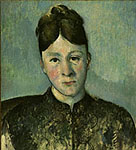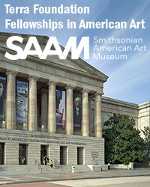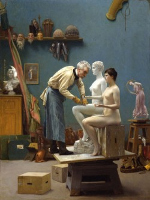X
Please wait for the PDF.
The browser will either open the file, download it, or display a dialog.
The browser will either open the file, download it, or display a dialog.
This article examines a little-studied but important facet of Cézanne's production: the twenty-six portraits of his wife, Hortense Fiquet Cézanne. Several key images are considered in detail in relation to the intersection of late nineteenth-century conceptions of emotion and Cézanne's experiments with color.
Henry Ossawa Tanner's global vision of Christ circa 1900 projected an ideal of hybridity that embodied the artist's personal resistance not only to racial stereotypes but also to racial thinking as such.
Russian graphic satires published in the periodical press explored the constitution of the art world in detail, often addressing aesthetic as well as social issues. This article examines how these images interrogated the newly-emerging realist mode in painting in ways which were only later addressed in the written genre of art criticism.
When Manet's Execution of Maximilian was exhibited in New York and Boston in 1879-80, it elicited the cautious enthusiasm of some critics and artists but was an unmitigated failure with the public. This essay examines Manet's motivations for sending the Execution to America, and analyzes the artistic and political concerns that influenced the painting's reception.
This essay looks at two key modernist texts—the biographical portrait of Cézanne that emerged at the turn of the 20th century, and Zola's description of anguished creativity in L'Oeuvre—and considers their role in forming a new notion of the artistic persona at the fin-de-siècle. It is a notion, the author argues, rooted in contemporary ideas about degeneracy and the pathologization of genius.
The presentation strategies used by Gilded Age art collector T. B. Walker helped establish a pattern for the dissemination of cultural knowledge throughout the United States.












